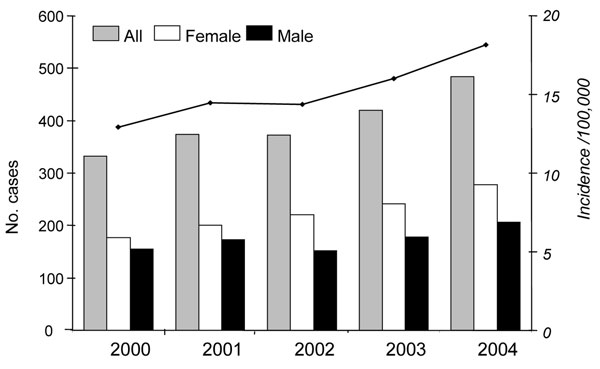Volume 13, Number 7—July 2007
Research
Antimicrobial Drugs and Community-acquired Methicillin-Resistant Staphylococcus aureus, United Kingdom
Figure

Figure. Annual number of all study participants with methicillin-resistant Staphylococcus aureus (MRSA) recorded for the first time in the General Practice Research Database (GPRD) and no hospitalization in the past 24 months (vertical bars). The annual incidence rate of MRSA per 100,000 adults in the GPRD is indicated by the line above the bars. Data from the GPRD, United Kingdom, 2000–2004.
Page created: June 21, 2010
Page updated: June 21, 2010
Page reviewed: June 21, 2010
The conclusions, findings, and opinions expressed by authors contributing to this journal do not necessarily reflect the official position of the U.S. Department of Health and Human Services, the Public Health Service, the Centers for Disease Control and Prevention, or the authors' affiliated institutions. Use of trade names is for identification only and does not imply endorsement by any of the groups named above.